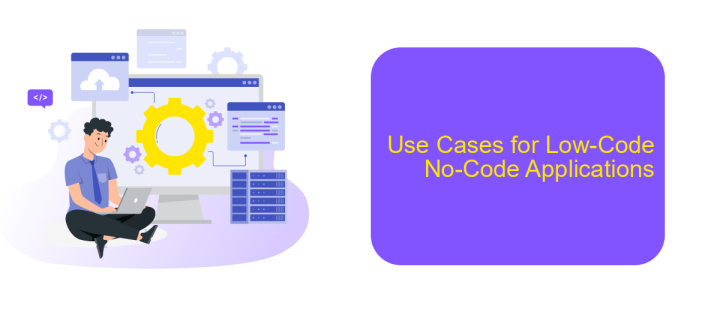Low-Code No-Code Application Development Service
In today's fast-paced digital landscape, Low-Code No-Code (LCNC) application development services are revolutionizing how businesses create software. By enabling users to develop applications with minimal coding knowledge, LCNC platforms accelerate innovation, reduce costs, and empower a broader range of individuals to contribute to the development process. Discover how these transformative tools can streamline your workflow and drive your business forward.
Introduction to Low-Code No-Code Application Development Service
Low-Code No-Code Application Development Service is revolutionizing the way businesses create software solutions. By simplifying the development process, these platforms enable users with little to no programming experience to build applications quickly and efficiently. This approach significantly reduces the time and cost associated with traditional software development.
- Rapid development: Build applications in a fraction of the time.
- Cost-effective: Lower development costs by minimizing the need for specialized developers.
- User-friendly: Intuitive interfaces make it accessible for non-technical users.
- Scalability: Easily scale applications as your business grows.
- Integration: Seamlessly integrate with other services and tools such as ApiX-Drive.
One of the key advantages of low-code no-code platforms is their ability to integrate with various services. For instance, ApiX-Drive offers a robust solution for automating and managing integrations, allowing users to connect different applications without writing a single line of code. This makes it easier to synchronize data and streamline workflows, enhancing overall productivity and efficiency.
Benefits of Low-Code No-Code Development

Low-Code No-Code development empowers businesses to create applications quickly and efficiently without the need for extensive coding knowledge. This approach significantly reduces development time, allowing companies to bring their products to market faster. It also lowers costs, as fewer specialized developers are needed, making it an attractive option for small to medium-sized enterprises. Additionally, the intuitive drag-and-drop interfaces enable non-technical team members to participate in the development process, fostering greater collaboration and innovation within organizations.
Another major benefit is the ease of integration with existing systems and services. Platforms like ApiX-Drive simplify the process of connecting various applications, enabling seamless data flow and automation across different tools. This capability enhances operational efficiency and ensures that all business processes are well-coordinated. Furthermore, the flexibility of Low-Code No-Code solutions allows for rapid adjustments and updates, ensuring that applications can evolve in response to changing business needs without significant downtime or resource investment.
How Low-Code No-Code Works

Low-Code No-Code platforms simplify the application development process by providing visual interfaces and pre-built components. This allows users, even those without extensive programming knowledge, to create applications through drag-and-drop functionality and simple configurations.
- Users select the desired components from a library of pre-built modules.
- They then drag and drop these components onto a visual canvas, arranging them to form the application's structure.
- Next, users configure the components by setting properties and defining workflows, often using simple logic rules.
- For more advanced needs, some platforms allow the integration of third-party services and APIs. For instance, ApiX-Drive can be used to automate data transfers between different systems, enhancing the application's capabilities.
- Finally, the application is tested and deployed, often with just a few clicks, making the entire process highly efficient.
This approach significantly reduces development time and costs, enabling businesses to quickly respond to market demands. By leveraging Low-Code No-Code platforms, organizations can empower a broader range of employees to contribute to application development, fostering innovation and agility.
Use Cases for Low-Code No-Code Applications

Low-Code No-Code applications are transforming the way businesses operate by enabling rapid development with minimal coding. These platforms are particularly beneficial for companies that need to quickly adapt to market changes and innovate without the need for extensive IT resources.
One of the primary use cases for Low-Code No-Code applications is automating routine tasks. By leveraging these platforms, businesses can streamline workflows, reduce human error, and free up valuable time for more strategic activities. Additionally, these applications are ideal for developing internal tools that can enhance productivity and collaboration among teams.
- Automating routine tasks to improve efficiency.
- Creating internal tools to boost team collaboration.
- Developing customer-facing applications quickly.
- Integrating various systems and services seamlessly.
For instance, ApiX-Drive is a service that helps businesses integrate various applications effortlessly, enhancing the functionality of Low-Code No-Code platforms. By using ApiX-Drive, companies can connect disparate systems without the need for complex coding, thereby maximizing the potential of their Low-Code No-Code applications.
- Automate the work of an online store or landing
- Empower through integration
- Don't spend money on programmers and integrators
- Save time by automating routine tasks
Choosing the Right Low-Code No-Code Platform
When selecting a low-code no-code platform, it is essential to consider your specific business needs and the technical requirements of your projects. Evaluate the platform's ease of use, scalability, and integration capabilities. An intuitive interface is crucial for enabling non-technical users to create applications efficiently. Additionally, ensure the platform can scale with your business growth and handle increasing data volumes and user loads.
Integration capabilities are another critical factor. Choose a platform that seamlessly integrates with your existing systems and third-party services. For instance, ApiX-Drive is a valuable tool that simplifies the integration process, allowing you to connect various applications without coding. This can significantly enhance your workflow automation and data synchronization, ensuring smooth operations across different platforms. Thoroughly assess the platform's support and community resources, as these can be vital for troubleshooting and continuous improvement.
FAQ
What is Low-Code/No-Code application development?
Who can benefit from Low-Code/No-Code platforms?
How secure are Low-Code/No-Code applications?
Can Low-Code/No-Code platforms integrate with existing systems?
What are the limitations of Low-Code/No-Code platforms?
Apix-Drive will help optimize business processes, save you from a lot of routine tasks and unnecessary costs for automation, attracting additional specialists. Try setting up a free test connection with ApiX-Drive and see for yourself. Now you have to think about where to invest the freed time and money!


